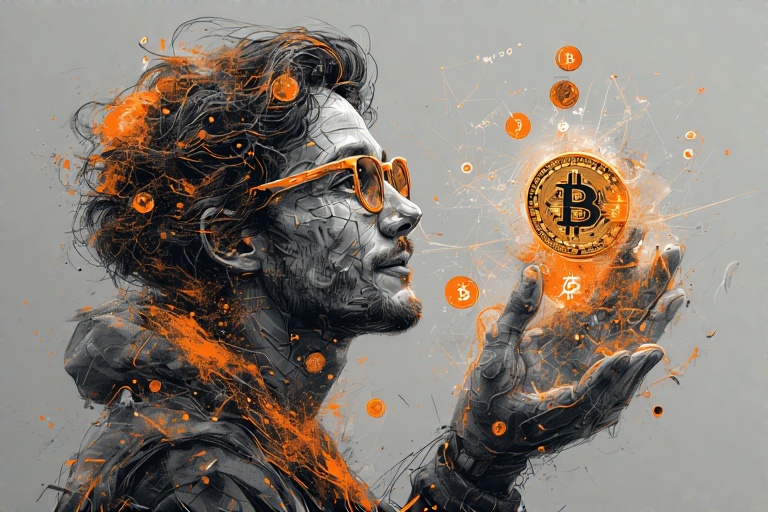Non-fungible tokens (NFTs) have come a long way since their earliest days as pixel art curiosities. In 2025, they no longer exist solely as expensive JPEGs on blockchains; they’ve evolved into versatile digital assets that power gaming economies, real-world asset tokenization, membership perks, and even identity systems. This article examines what an NFT is today, how its role has shifted, and the key trends shaping its future.
1. The Modern Definition of an NFT
An NFT is a unique cryptographic token representing ownership or proof of authenticity for a distinct digital or physical item. Unlike cryptocurrencies such as Bitcoin or Ethereum—where each coin is interchangeable—NFTs carry individual metadata pointing to artwork, collectibles, smart-contract logic, or real-world assets. In 2025, most NFTs live on high-performance Layer-1 and Layer-2 chains (Ethereum, Solana, Polygon, Avalanche) that balance speed, cost, and decentralization.
2. From Art Galleries to Real-World Utilities
Early NFT hype centered on digital art and collectibles. While that niche still thrives—platforms like SuperRare and ArtBlocks host blue-chip digital exhibitions—today’s NFTs extend far beyond:
- Gaming Economies: In on-chain games, weapons, skins, and in-game land plots are minted as NFTs with enforceable scarcity. Players buy, trade, and rent these digital items in peer-to-peer marketplaces, sometimes earning real income.
- Tokenized Real-World Assets: Fractional ownership of real estate, fine art, or commodities is facilitated by NFTs that represent legal shares of off-chain holdings. Investors gain liquidity and lower entry barriers to high-value markets.
- Membership and Access: Brands and communities issue NFTs as lifetime tickets to events, loyalty programs, or private forums. Holders unlock virtual meet-ups, airdrops, and governance rights in decentralized autonomous organizations (DAOs).
- Identity and Credentials: Universities and credentialing bodies now issue diplomas, licenses, and certifications as verifiable NFTs. This tamper-proof model streamlines verification for employers and regulators.
3. Market Dynamics and Metrics
After the speculative boom and subsequent cooldown of 2021–2022, NFT trading volume stabilized at around $1.2 billion per quarter by early 2025. Daily active wallets interacting with NFT marketplaces average 150,000, reflecting sustained interest from collectors, gamers, and institutions. Cross-chain bridges and Layer-2 rollups have driven fees below $0.10 per transaction, making minting and transfers economically viable for micro-transactions and subscription-style drops.
4. Key Innovations Driving Growth
Several technological and design developments underpin today’s NFT ecosystem:
- Dynamic NFTs: Tokens that update their metadata based on external inputs—game achievements, real-world events, or social metrics—unlock interactive storytelling and evolving artworks.
- Composable Standards: New smart-contract frameworks (ERC-4907, ERC-721x) enable rental markets, royalties automation, and nested ownership, allowing one NFT to own or reference others.
- Cross-Chain Interoperability: Protocols like LayerZero and Wormhole establish trustless messaging between chains, letting NFTs migrate or be mirrored without custodial bridges.
5. Challenges and Criticisms
Despite progress, NFTs face hurdles:
- Regulatory Ambiguity: Jurisdictions worldwide still debate whether certain NFTs qualify as securities or commodities, creating compliance headaches for platforms and creators.
- Environmental Concerns: As chains migrate from proof-of-work to proof-of-stake, carbon footprints have dropped—but legacy networks and high-frequency NFT trading can still generate notable energy use.
- Market Saturation: Tens of thousands of new collections launch monthly, making discoverability and quality curation a persistent issue for buyers and platforms.
- Fraud and Scams: Phishing attacks, counterfeit mints, and wash trading remain risks, prompting marketplaces to adopt advanced on-chain analytics and off-chain identity checks.
6. The Road Ahead for NFTs
Looking forward, NFTs will integrate more tightly with both decentralized finance and traditional industries. Expect tokenized carbon credits, real-time supply-chain certificates, and programmable insurance underwriting via NFTs. As standards converge and governance models mature, these tokens will underpin new economic models—where ownership is fractional, programmable, and interoperable across digital and physical realms.
In 2025, NFTs have shed their image as mere digital collectibles and emerged as versatile building blocks for decentralized economies, real-world asset management, and next-generation identity systems. For developers, investors, and enterprises alike, understanding this evolved landscape is essential to tapping the full potential of non-fungible tokens.







Add a Comment